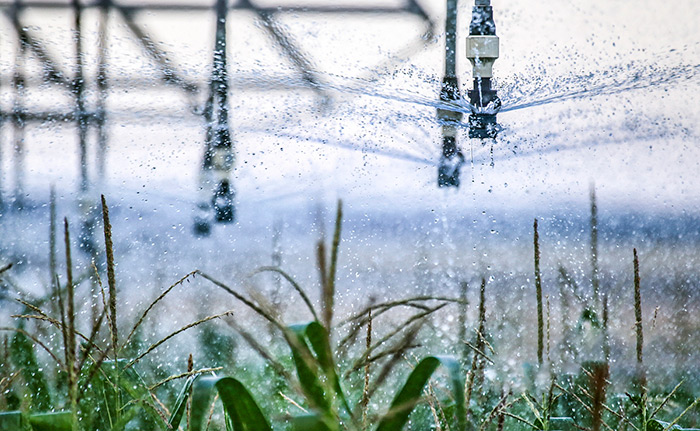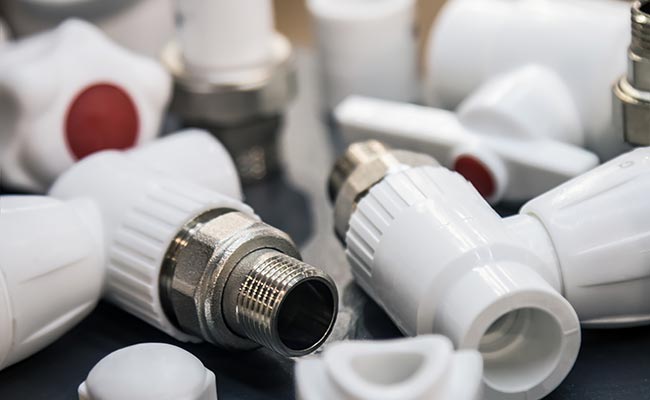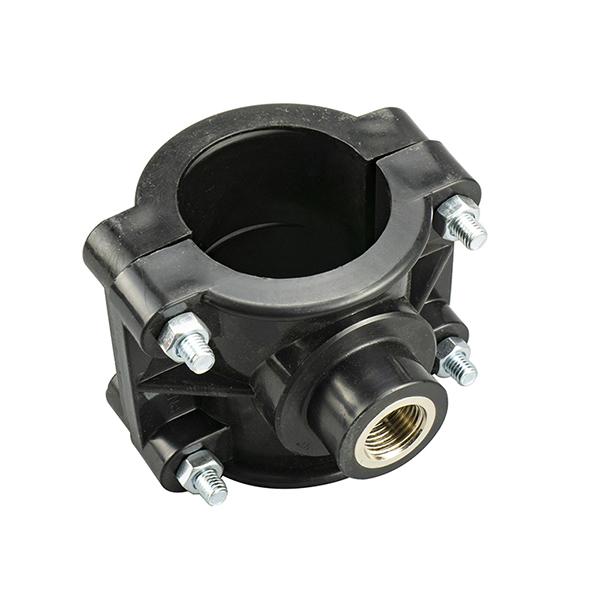
A PP clamp saddlee sebetsa ka potlako ha motho a hloka ho emisa ho dutla hoa nosetso. Balemi ba lirapa le lihoai ba tšepa sesebelisoa sena hobane se etsa tiiso e thata, e sa keneleng metsi. Ka ho kenngoa ka nepo, ba ka lokisa ho lutla kapele le ho boloka metsi a phalla moo a hlokahalang haholo.
Lintlha tsa bohlokoa
- Saddle ea PP e emisa ka potlako ho lutla ka ho koala ka thata libaka tse senyehileng liphaepheng tsa nosetso, ho boloka metsi le chelete.
- Ho khetha boholo bo nepahetseng le ho hloekisa bokaholimo ba phala pele ho ts'ebetso ho tiisa tiiso e matla, e sa luleng.
- Tiisa liboutu ka ho lekana 'me u leke ho lutla ho boloka tokiso e tšoarellang nako e telele.
PP Clamp Saddle: Seo e leng sona le hore na ke hobane'ng ha e sebetsa
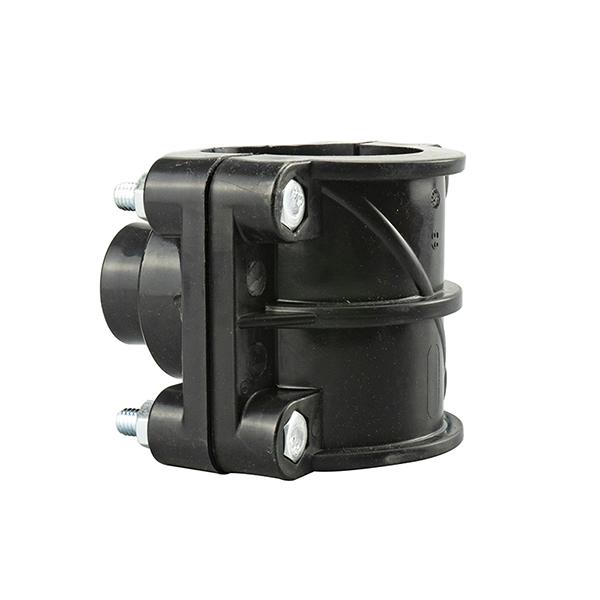
Kamoo PP Clamp Saddle e Emisang ho Lutla
Saddle ea PP e sebetsa joalo ka tlamisa e matla ea liphaephe. Ha motho e mong a e beha holim'a sebaka se senyehileng, e phuthela phala ka thata. Sale e sebelisa moralo o khethehileng o hatellang peipi ebe o koala sebaka. Metsi a ke ke a tsoa hobane clamp e etsa hore e tšoare ka thata. Hangata batho ba e sebelisa ha ba bona petso kapa lesoba le lenyenyane moleng oa bona oa ho nosetsa. Saddle e lekana hantle mme e thibela ho dutla hanghang.
Keletso: Kamehla etsa bonnete ba hore bokaholimo ba peipi bo hloekile pele u kenya sale. Sena se thusa tiiso hore e lule e tiile ebile e sa lutle.
Melemo ea ho Sebelisa PP Clamp Saddle ho Nosetsa
Balemi ba bangata le balemi ba lirapa ba khetha PP clamp saddle bakeng sa bonamekhoa ea ho nosetsa. Mabaka a mang ke ana:
- Ho bonolo ho e kenya, kahoo ho lokisa ho nka nako e fokolang.
- Saddle ea clamp e lekana boholo ba liphaephe, e etsa hore e tenyetsehe haholo.
- E sebetsa hantle tlas'a khatello e phahameng, kahoo e khona ho sebetsana le mesebetsi e boima.
- Thepa e hanyetsa mocheso le tšusumetso, e bolelang hore e nka nako e telele.
- E thusa ho boloka metsi moo a lokelang, ho boloka chelete le lisebelisoa.
Saddle ea PP e fana ka khotso ea kelello. Batho ba tseba hore tsamaiso ea bona ea nosetso e tla lula e le matla 'me e sa lutle.
Mohato ka Mohato Tataiso ea ho Kenya Saddle ea PP Clamp
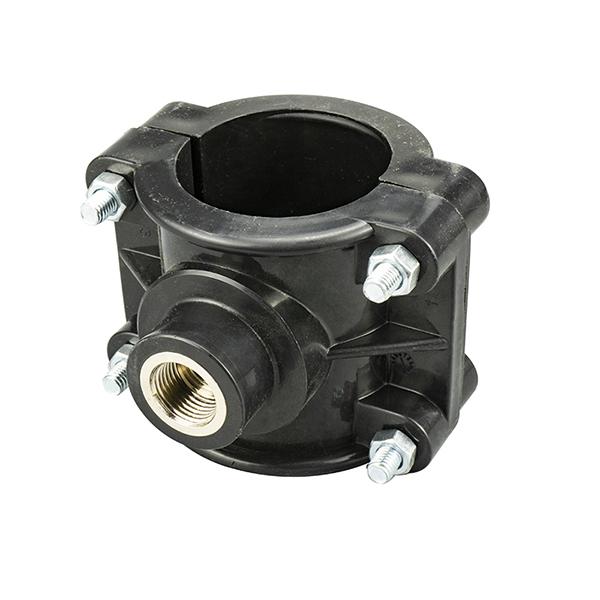
Ho khetha boholo bo nepahetseng ba PP Clamp Saddle
Ho khetha boholo bo nepahetseng ho etsa phapang eohle bakeng sa ho lokisoa ntle le ho lutla. Motho ea kenyang o lokela ho qala ka ho lekanya bophara ba bokantle ba phala e kholo. Tekanyo ea caliper kapa tepi e sebetsa hantle bakeng sa sena. Ka mor'a moo, ba hloka ho lekola boholo ba phala ea lekala e le hore sethala sa saddle se tsamaisane hantle. Ho lumellana ha lintho le hona ho bohlokoa. Mohlala, phala e bonolo joalo ka PVC kapa PE e hloka sets'oants'o se sephara ho qoba ho petetsa ka thata, ha phala ea tšepe e khona ho sebetsana le thipa e tšesaane.
Mona ke lethathamo le bonolo la ho khetha boholo bo nepahetseng:
- Lekanya bophara ba phala e kholo.
- Khetholla bophara ba phala ea lekala.
- Etsa bonnete ba hore sala le lisebelisoa tsa liphaephe li sebetsa hantle hammoho.
- Khetha mofuta o nepahetseng oa khokahanyo, joalo ka khoele kapa flanged.
- Etsa bonnete ba hore clamp e lumellana le botenya ba lebota la phala.
- Netefatsa maemo a khatello ea clamp kapa e feta litlhoko tsa pipeline.
Keletso: Bakeng sa libaka tse nang le mefuta e mengata ea liphaephe, li-saddle clamps tse pharaletseng li thusa ho koahela li-diameter tse fapaneng.
Ho Lokisetsa Pipe bakeng sa ho Kenya
Sebaka se hloekileng sa peipi se thusa PP clamp saddle seal ka thata. Sesebelisoa se lokela ho hlakola litšila, seretse, kapa mafura sebakeng seo clamp e tla ea ho sona. Haeba ho khoneha, ho sebelisa primer ho ka thusa ho tšoara saddle hantle le ho feta. Sebaka se boreleli, se omeletseng se fana ka liphello tse ntle ka ho fetisisa.
- Tlosa litšila kapa mafome leha e le afe.
- Omisa phala ka lesela le hloekileng.
- Tšoaea moo clamp e tla lula teng.
Ho kenya PP Clamp Saddle
Joale ke nako ea ho behaPP clamp saddleka phala. Sehlomathi se beha sale holim'a moo ho lutlang teng kapa moo ho hlokahalang lekala. Saddle e lokela ho lula fatše khahlanong le phala. Boholo ba li-clamp saddles tsa PP li tla le liboutu kapa likurufu. Motho ea kenyang o kenya tsena ebe o li tiisa ka letsoho qalong.
- Beha sale e le hore phallo e shebane le tsela e nepahetseng.
- Kenya liboutu kapa likurufu ka har'a masoba a clamp.
- Tiisa boutu e 'ngoe le e 'ngoe hanyane ka nako, u tsamaee ka mokhoa oa crisscross.
Tlhokomeliso: Ho tiisa liboutu ka ho lekana ho thusa sale ho tšoara phala ntle le ho baka tšenyo.
Ho sireletsa le ho tiisa Clamp
Hang ha saddle e lutse sebakeng, motho ea kenyang mochine o sebelisa wrench ho qeta ho tiisa liboutu. Ha baa lokela ho tiea ho feta tekano, kaha sena se ka senya phala kapa clamp. Sepheo ke ho lekana hantle ho ts'oarang sala hantle ka thata.
- Sebelisa wrench ho tiisa bolt ka 'ngoe butle-butle.
- Sheba hore sala ha e suthe kapa ha e sekame.
- Etsa bonnete ba hore clamp e ikutloa e sireletsehile empa e se thata ho feta tekano.
Baetsi ba bang ba fana ka litekanyetso tsa torque bakeng sa ho tiisa. Haeba e le teng, motho ea kenyang o lokela ho latela linomoro tsena bakeng sa tiiso e ntle ka ho fetisisa.
Teko ea ho Lutla le ho Rarolla Mathata
Kamora ho kenya, ke nako ea ho leka tokiso. Sehlomathisi se bulela metsi 'me se shebelle sebaka sa clamp haufi-ufi. Haeba metsi a tsoa, ba tima metsi 'me ba hlahloba liboutu. Ka linako tse ling, ho tiisa hanyane kapa ho lokisa kapele ho lokisa bothata.
- Bulela metsi butle-butle.
- Lekola seqhomane le phaephe bakeng sa marothodi kapa difafatsi.
- Haeba ho dutla ho hlaha, tima metsi mme o tiise diboutu hape.
- Pheta teko ho fihlela sebaka se lula se omme.
Keletso: Haeba ho lutla ho tsoela pele, hlahloba habeli hore saese le thepa ea liphaephe li tsamaellana. Ho lekana hantle le bokaholimo bo hloekileng hangata ho rarolla mathata a mangata.
Sesebelisoa se nepahetseng sa PP clamp se boloka lits'ebetso tsa nosetso li sa lutle ka lilemo. Ha motho a latela mohato o mong le o mong, o fumana litholoana tse matla, tse tšepahalang. Batho ba bangata ba fumana sesebelisoa sena se sebetsa bakeng sa ho lokisa.
Hopola, tlhokomelo e nyane nakong ea ho seta e boloka nako le metsi hamorao.
LBH
Ho nka nako e kae ho kenya PP clamp saddle?
Batho ba bangata ba qeta mosebetsi ka nako e ka tlase ho metsotso e 10. Mokhoa ona o tsamaea ka potlako ka lisebelisoa tse hloekileng le phala e lokiselitsoeng.
A na ho na le motho ea ka sebelisang saddle ea PP holim'a thepa efe kapa efe ea liphaephe?
Li sebetsa hantle ho PE, PVC, le liphaephe tse tšoanang tsa polasetiki. Bakeng sa lipeipi tsa tšepe, hlahloba lintlha tsa sehlahisoa kapa u botse mofani oa thepa.
Motho o lokela ho etsa eng haeba saddle ea clamp e ntse e lutla ka mor'a ho e kenya?
Ntlha ea pele, hlahloba liboutu hore na li tiile hakae. Hloekisa phala hape ha ho hlokahala. Haeba ho lutla ho tsoela pele, etsa bonnete ba hore boholo ba sale bo tsamaisana le phaephe.
Nako ea poso: Jun-27-2025


